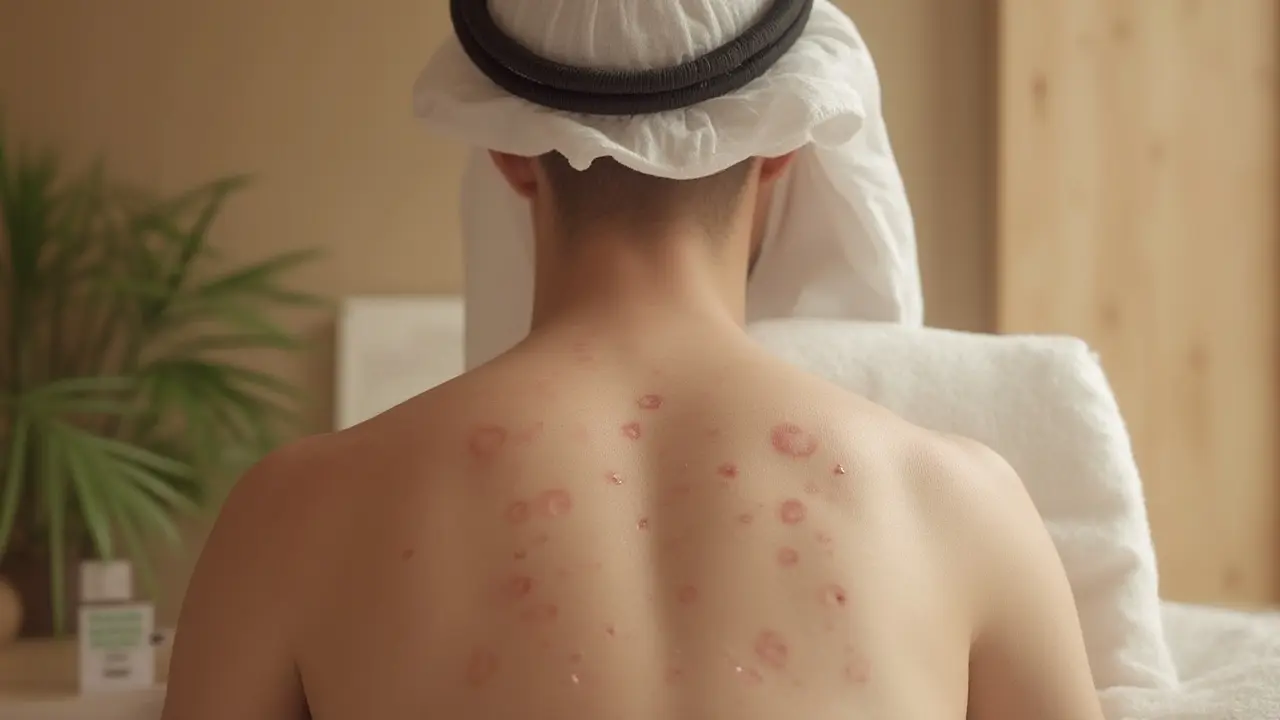Imagine walking into a spa and seeing someone step out of a treatment room with big, dark circles dotting their back. Curious? That’s cupping therapy—the age-old practice of using suction cups to ease muscle tension, boost circulation, and maybe give your Instagram some wild content. It’s been Hollywood’s darling for years, thanks to athletes like Michael Phelps, but those impressive marks aren’t just for show. If you’ve ever wondered about the less glamorous flipside of this buzzy treatment, you’re definitely not alone.
Why Do People Experience Side Effects from Cupping?
Cupping works by placing heated or suctioned cups on your skin, creating a vacuum. This sucks the skin upward, bringing blood to the surface and releasing muscle knots. Sounds simple enough, but this pretty dramatic shift in circulation and skin pressure can cause some unexpected reactions. Even though most clients leave a session feeling relaxed, side effects can appear hours, or even days, later.
The most common side effect—those famous circular bruises—happens because capillaries under the skin break. It’s not really a bruise from blunt force, but it definitely can look alarming, especially for first-timers. And let’s set the record straight: these aren’t dangerous, but if you’re not expecting them, it’s a shock to see your back covered in deep red or purple rings. The size and color can vary depending on your skin type, how long the cups stay in place, and how much suction your therapist uses.
A research paper published in the Journal of Traditional and Complementary Medicine breaks down these side effects: “Transient mild adverse events such as skin discoloration and minor discomfort are common but usually resolve within a week.” But don’t think that’s all there is to it. Sometimes people get a rash, blistering, or skin irritation, especially if the therapist leaves the cups on too long or the suction gets overly intense. A few folks may feel dizzy or lightheaded afterwards—usually because of a sudden change in blood flow or nervous anticipation.
What Side Effects Are Most Common After Cupping?
The classic signature—round, reddish-purple marks—shows up on nearly everyone. But let’s go through the full laundry list, from minor annoyances to risks worth talking about at your next spa visit. Here are the most frequent side effects spa-goers notice after cupping therapy:
- Bruising: Not your typical black-and-blue bruise, but more of a pink to deep purple circular mark. These usually fade in about 7-10 days.
- Soreness: The treated area can feel tender or achy for a few days. This is your body responding to increased circulation and tissue manipulation.
- Skin Sensitivity: Redness, warmth, and mild irritation are common, especially if you’re new to cupping or have sensitive skin.
- Itching: As the marks heal, you might notice some itching—almost like a healing bruise or sunburn.
- Blistering: Less common, but sometimes cup suction is strong enough to cause small blisters. These can look angry but usually heal quickly when left alone.
- Rash: Allergic reactions to the cups or lubricants can cause red or bumpy skin.
- Dizziness or Fatigue: A few people feel drained or a bit dizzy right after a treatment, especially after their first session.
For quick reference, here’s a table showing how common these side effects really are, based on reports from spa clients and therapists:
| Side Effect | How Common? | Average Duration |
|---|---|---|
| Bruising/Marks | Very common (90%+) | 7-10 days |
| Soreness | Common | 2-5 days |
| Skin Sensitivity | Common | 1-3 days |
| Itching | Occasional | 2-4 days |
| Blistering | Rare | 3-7 days |
| Rash | Rare | 3-5 days |
| Dizziness/Fatigue | Occasional | Few hours |
If you’re worried about these reactions, know that for the vast majority, these issues are purely cosmetic or mild. But always mention any new spots or serious discomfort to your therapist or doctor, especially if you have a history of skin conditions, allergies, or blood disorders.

Who’s More Likely to Get Side Effects? Risks and Precautions
Cupping isn’t one-size-fits-all. People with delicate or sensitive skin usually get darker, longer-lasting marks. If you bruise easily, have eczema, psoriasis, or are on blood-thinning meds, let your therapist know upfront. This lets them adjust the pressure, the type of cup, or decide if you should skip cupping altogether.
Pregnant women should avoid cupping on the belly, lower back, or around sensitive joints. The Mayo Clinic points out another risk: folks with clotting disorders or open wounds are poor candidates because suction can worsen these issues. Avoid cupping over any skin break, sunburn, or mole.
The setting matters too. Hygiene is key. Reputable spas follow strict cleaning protocols, but in rare cases, using unsterilized cups or leaving them on too long can lead to infection. Watch for swelling, pus, or increasing pain—those are big red flags that the treatment didn’t go as planned.
A quote from Dr. Brent Bauer at the Mayo Clinic gets straight to the point:
“In experienced hands, cupping is safe, but side effects like bruising, soreness, or mild discomfort are extremely common.”If you’re not sure about your own compatibility, talk to your therapist or your doctor before booking. There’s no shame in asking questions, and a good spa will always be transparent about what’s normal and what isn’t.
Tips for Minimizing and Managing Cupping Side Effects
Nobody wants to leave a relaxing spa session surprised by dramatic skin changes. The good news? A few steps make the ride smoother and the after-effects gentler.
- Stay hydrated before and after your session. This helps your body flush out the extra blood flow and can speed up healing of marks.
- Avoid intense workouts, swimming, or sunbathing on freshly cupped skin for at least 24-48 hours. Your skin is more sensitive and prone to irritation.
- If the marks itch as they heal, use a mild, fragrance-free lotion or aloe gel to calm things down.
- Choose an experienced therapist in a reputable spa. Don’t be shy about asking them to adjust the suction or cup time if you feel too much discomfort.
- Never pop blisters or scratch at the marks. This can lead to skin infections or scars.
- If you’re taking blood thinners or have an immune disorder, talk to your healthcare provider before trying cupping. There are times when this treatment just isn’t the best fit.
- Keep an eye on any unusual symptoms. Minor bruising or redness is normal, but if you see swelling, pus, or develop a rash that doesn’t fade, reach out to your doctor.
First-timers often get more dramatic marks than repeat clients—your body adapts a little after regular sessions. If you’re prepping for an event or vacation where you don’t want circles on your skin, schedule your session at least two weeks in advance. Always, always wear loose, comfortable clothing to your appointment to avoid friction or extra irritation afterwards.
Cupping isn’t a cure-all and it definitely isn’t for everyone, but for people who love it, the rewards of relief and relaxation can make those weird marks worthwhile. Just make sure you know exactly what to expect before you hop up on that spa table for your first ride with the cups.

FAQ
- Do cupping marks hurt? Most people describe the marks as painless, but the area may feel a little sore or tender for a few days.
- Is it safe to exercise after cupping? Wait 24-48 hours before doing high-intensity workouts to give your skin and muscles time to recover.
- Can cupping cause permanent scarring? It's rare, but improper technique or damaging blisters can sometimes leave scars. Choose qualified therapists to reduce risk.
- Are any side effects dangerous? Almost all side effects are mild and temporary. Signs of infection (like pus or severe swelling) need quick medical attention.
- How long do cupping side effects usually last? Most bruises and redness fade within seven to ten days. Soreness usually disappears after a couple of days.



